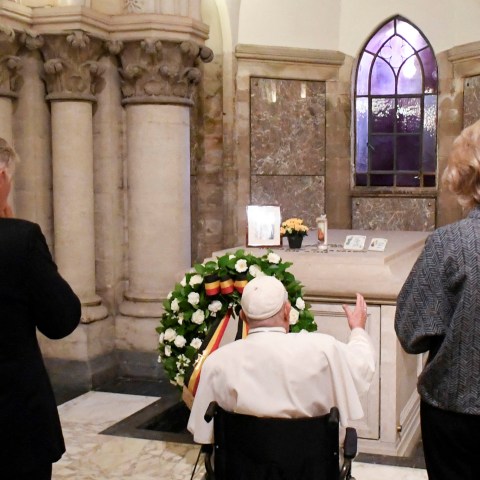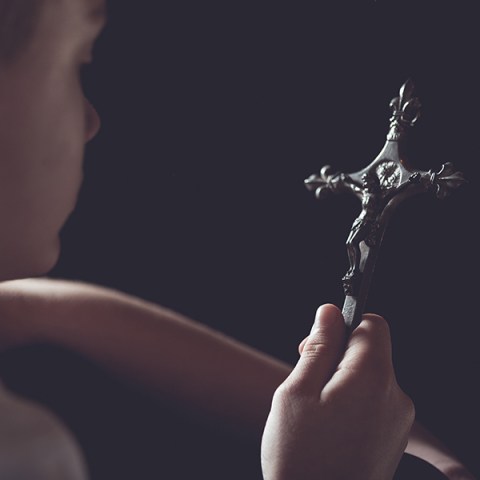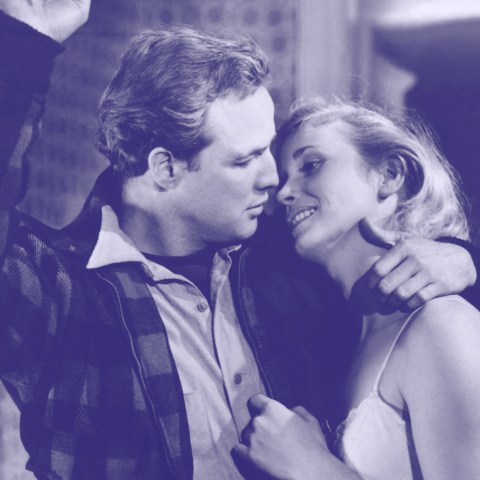Not voodoo beads or Mary-worship, but a privileged Scriptural meditationYears ago, a relative of mine who’d fallen away from the faith referred to my rosary as “voodoo beads.” At the time, I laughed it off because it didn’t want to let her know that she’d gotten my goat. Deep down, I was ticked off for two reasons. First, I resented the insult she’d flung at what I consider to be one of the most beautiful and fruitful traditions of the Catholic Church. Second, I was miffed at her insult to my intelligence in insinuating I believed a string of beads could have magical properties. Once I’d worked through my irritation, I let it go and chalked it up to “her problem, not mine.”
Recently, I had a similar experience on my Facebook page. This time, it was a disgruntled anti-Catholic who was enraged by my mention of the Blessed Virgin Mary in one of my posts. He was upset at my suggestion that Mary could intercede for us before her Son. In spite of my efforts to charitably explain the truth of our Faith, he insisted that all Catholics were damned to hell because we worship Mary. What made him think that? Because he saw Catholics “praying to her with those beads of theirs” outside an abortion clinic. This time, I couldn’t laugh it off because the insults became increasingly more vulgar and hostile—I finally had to block him from my Facebook page.
I’ve been thinking a lot about those two incidents as we begin October, long celebrated in the Catholic Church as the Month of the Holy Rosary. My relative, and the man on Facebook, scoffed at the rosary because they were ignorant about it. Their reactions were based on their own faulty assumptions and judgments. Or, perhaps it was that the Faith was poorly explained to them once upon a time. Either way, if they’d fully understood the Rosary (the prayer, not the beads), they wouldn’t have said what they did.
The Rosary isn’t hocus pocus, and it’s not blasphemous. According to legend, the Blessed Virgin Mary gave it to St. Dominic (1170-1221) as a form of prayer and as an aid in the conflicts with the heretic Albigensians. Soon the Rosary was used in Medieval monasteries as a substitute for the Divine Office for the illiterate laity. Rather than reading and praying the 150 Psalms, the people would pray 150 "Our Fathers” while counting them on a ring of beads that was known as “the crown.”
During the twelfth century, devotion to Mary grew, and gradually the “Psalter of the Blessed Virgin Mary” was developed in which 150 “Hail Marys” were prayed instead of Our Fathers. Later, the Hail Marys were divided by Dominican Friar Henry Kalkar (1328-1408) into fifteen decades, each decade referring to an event in the life of Jesus and Mary. Soon after, Dominican Alanus de Rupe (1428-1478) grouped the decades into episodes of Salvation History called the Joyful, Sorrowful, and Glorious Mysteries. In 2002, Pope St. John Paul II added the Luminous Mysteries to the Rosary.
Because of its Dominican roots, the Rosary became a special apostolate of the Dominicans. Pope Pius V, himself a Dominican, adopted and promoted the Rosary and through his efforts, it became one of the most popular devotions in Christendom. He officially approved the Rosary in 1569. Pope Leo XIII (pope from 1878-1903) began the practice of dedicating the entire month of October to the Rosary, centered around the October 7 Feast of Our Lady of the Holy Rosary, which commemorates the miraculous victory of the Christian forces over the Ottoman Turks in the Battle of Lepanto.
The Rosary has a long, rich history, but it isn’t a history belonging solely to popes and Dominicans. It’s a history that belongs to all of the faithful. The Rosary is a meditative prayer that leads us deeper and deeper into the lives of Christ and his Mother. The Rosary is primarily Scriptural, and when we meditate on the Joyful, Luminous, Sorrowful and Glorious Mysteries, we walk beside Jesus and Mary – and at times St. Joseph, too – as they traversed the roads of Bethlehem, Nazareth, Galilee, and Jerusalem. Along the course of praying the 20 decades, we follow our Lord from His Incarnation in Mary’s womb to the Foot of the Cross and to His Glorious Ascension into Heaven.
When we recite the “Hail Mary,” we’re not worshipping Mary; we’re joining the Archangel Gabriel and St. Elizabeth in acknowledging and offering gratitude for Mary’s vital role in the Incarnation. When we pray the Rosary, we seek Mary’s intercession, not because we believe she’s more powerful than Christ, but because she is so close to him. She said, “My soul magnifies the Lord.” Her role is to help us do the same.
“Those beads” aren’t the stuff of false gods and incantations. They’re the stuff of Christians yearning to be drawn more and more into the heart of their Savior and to imitate him more in their own lives.
Marge Fenelon is a Catholic author, columnist, and speaker and a regular guest on Catholic radio. She’s written several books about Marian devotion and Catholic family life, including "Strengthening Your Family: a Catholic Approach to Holiness at Home" (Our Sunday Visitor, 2011) and "Imitating Mary: Ten Marian Virtues for the Modern Mom" (Ave Maria Press, 2013). Her website is www.margefenelon.com.








